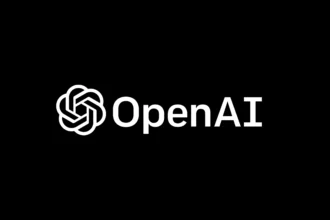Table of Contents
ToggleWhat are the OpenAI endpoints?
Have you ever awed at the capabilities of artificial intelligence and wondered how it churns out remarkably coherent text? Well, the magic often lies within the technical marvel known as OpenAI endpoints. In this article, we unpack the concept behind OpenAI endpoints, explore their functionalities, and delve into how you can leverage these tools for your needs.
Understanding OpenAI Endpoints
Endpoints provide a structured and defined method of accessing specific functionalities or services offered by an API. In the context of OpenAI, these endpoints are the gateways through which users can interact with different aspects of the OpenAI API, essentially allowing us to harvest the poetry, prose, banter, or even code that AI can generate.
OpenAI’s API is expansive and features a host of capabilities. However, at its core, it centers primarily on two main text completion endpoints: chat/completions and completions. Each serves a distinct purpose, enhancing user experience and flexibility. Let’s break each of them down.
1. Chat Completions Endpoint
The chat/completions endpoint is possibly the most interactive feature OpenAI has to offer. Imagine you’re sitting in your living room, and instead of engaging with a friend, you chat with an AI who can respond with an uncanny semblance of human conversation. That’s what this endpoint facilitates.
At its heart, the chat/completions endpoint allows for generating text outputs not just from a single prompt but through an interactive chat interface. Users can create back-and-forth conversations, which can resemble dialogues you might have with friends, advisors, or even fictional characters. It feels like a casual banter with an ultra-intelligent entity—cue sci-fi fanfare!
This endpoint employs a message-based structure. You send an array of messages where each one includes a role (either “user” or “assistant”) and the content of that message. This set-up makes it incredibly intuitive: you’re essentially structuring a conversation, and the AI responds accordingly. Have you ever wanted to brainstorm with an AI buddy? Well, this is how you do it!
Moreover, this endpoint can remember the context of the conversation, which enhances its ability to provide relevant responses, making exchanges feel more coherent and meaningful. It adapts to the dialogue flow just like a human would, from small talk to solving intellectual queries. The potential applications are endless: whether you’re crafting a captivating storyline or seeking technical advice, this feature can assist you.
2. Traditional Completions Endpoint
On the other side of the OpenAI endpoint spectrum lies the completions endpoint. This endpoint operates a little differently—think of it as getting inputs for essays, blog posts, or even coding without the back-and-forth charm of a chat interface. Instead, you provide a prompt, and voilà! The AI whirs to life, generating a response based solely on the initial command you’ve given.
This endpoint’s functionality is more linear; you submit a piece of text or just a few words, and the AI crafts a continuation or completion based on its trained knowledge. People frequently use it for tasks such as content generation, text summarization, and question answering. For instance, if you’re facing a blank page syndrome while trying to write a speech, feeding the AI a prompt such as, “Write about the importance of sustainability in modern business” could yield a well-structured starting point in seconds.
Similar to the chat/completions endpoint, this feature is also designed for versatility; it can be applied in various fields ranging from marketing copy to academic research. Thanks to OpenAI’s training datasets, it produces text that adheres to logical flow and relevancy. Think of it as your personal ghostwriter, always available whenever you need a boost of creativity.
How to Access OpenAI Endpoints
Now that we’ve dissected the main types of OpenAI endpoints, the burning question arises: how do you access these digital gems? Both endpoints are accessible via the OpenAI API, which requires an API key that authenticates users. To get started, all one needs is to visit the OpenAI website, sign up, and generate that magical API key.
- Sign Up: Set up your account on the OpenAI platform.
- API Key: Generate your unique API key that will allow you to interact with OpenAI’s services.
- Endpoint Access: Familiarize yourself with the API documentation provided by OpenAI, which contains examples on how to call the chat/completions and completions endpoints with your requests.
- Make your Request: Whether it’s a chat-based prompt or a linear completion, use simple code snippets to initiate requests to the desired endpoint.
Effectively, you are a magician equipped with a wand (API key) that opens onto the realm of endless AI-generated words.
Practical Applications of OpenAI Endpoints
To truly grasp the spectrum of possibilities that the OpenAI endpoints present, let’s delve into some practical applications. These features aren’t just high-tech novelties; they bring tangible solutions to real-world problems.
1. Content Creation
The writing world is bustling, and that’s where the completions endpoint shines brightest. Content creators, marketing teams, and bloggers often face the daunting task of consistent output. Many have found that integrating the OpenAI API into their workflow can make a world of difference! With just a prompt like, “Outline a blog post about travel tips,” a user can transform their brainstorming process, saving hours of time.
2. Customer Support
It’s 3 a.m. and your customers are still awake! AI can facilitate 24/7 support using the chat/completions endpoint. Companies can implement AI-driven chatbots on their platforms to assist with routine inquiries, allowing human agents to focus on more complex issues. By programming the AI with common customer problems and responses, it can serve as the first line of support, ensuring issues are addressed promptly.
3. Educational Tools
Imagine being a student who needs help at strange hours. The chat/completions endpoint can fulfill the role of a tutor, answering questions or explaining concepts to learners at any time of day or night. Educational institutions can embed such tools to provide supplemental learning assistants. Students can ask their AI assistant to explain calculus, assist with language translation, or summarize chapters from textbooks!
4. Personalized Recommendations
Anyone who has ever scoured online stores for products knows the agony of analysis paralysis. OpenAI endpoints can be integrated into e-commerce platforms to guide users with personalized product recommendations. By using past purchase data and user queries as prompts, the AI can suggest relevant items matching individual tastes, simplifying decision-making for consumers.
Considerations and Best Practices
While the potential uses for OpenAI endpoints are staggering, it is essential to consider responsible usage as well. As with any robust technology, ethical considerations come into play before diving headfirst into AI integrations. Here are some best practices:
- Monitor Outputs: Always review the content generated by AI as it may contain inaccuracies or unwanted biases.
- Privacy Matters: Safeguard user data by ensuring compliance with relevant privacy regulations when using AI to handle personal information.
- Clear Communication: Make it clear to users that they are engaging with AI and not a human when implementing chatbots or automated responses.
- Continuous Learning: Keep refining and updating your approach to using AI as technology proceeds to evolve.
Conclusion
As we pull the curtain back on what OpenAI endpoints can achieve, it’s clear that we’re living in an era where artificial intelligence is becoming an integral part of our lives and professions. The chat/completions and completions endpoints have a wealth of applications that can facilitate content creation, provide customer support, enhance education, and more.
With just a few clicks, users can unlock an entire universe of AI-generated responses, and while we venture into this digital landscape, it’s imperative to utilize these tools responsibly and ethically. After all, as fun as chatting with an AI may feel, let’s ensure we remain the masters of our digital realm, wielding the power of AI for good.


